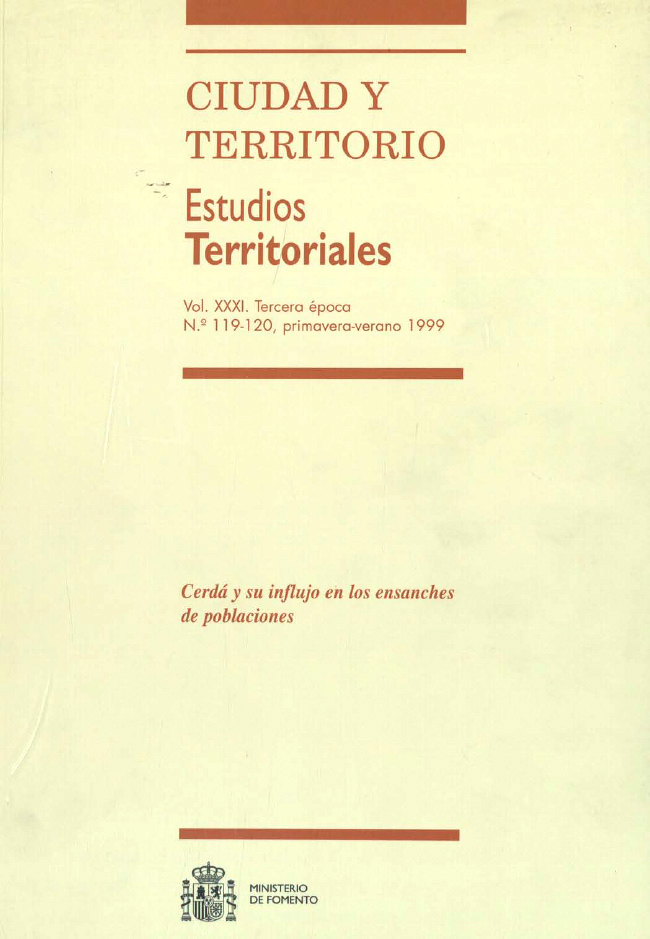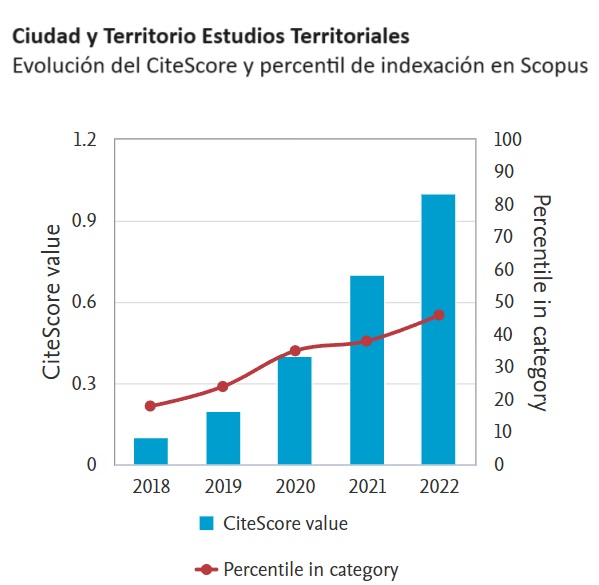The «Ensanches» of Spain seen from Abroad: Ideological Aspects of their C&T Planning
Keywords:
Historia del urbanismo, Ensanches urbanos, Cerdá, IdeologíasAbstract
The paper contrasts historiographically the two notions within Spanish C&T Planning represented by the Ensanche/New Town movement of the second half of the 19C. and the present day school's «reform from within». This aim is said to call for a rigorous definition of the very idea of an «ensanche» as it was understood in the 1864 Act and embodied in the great variety of projects then approved. The «encouraging» and somewhat tardy character of the Act -this as to the projects already approved between 1859-64- makes it necessary to look into the administrative machinery in play as to the various stages of each project. For the author, the historical process set in motion in Barcelona and then seconded by Madrid must also be born in mind. The upshot of such a study is the discovery of three generations of projects which bring the question up to the early years of the 20 C., these owing much to the differing variety of city subject to such operations. It is the agencies for C&T Planning and thei r conflicting interests that are the determining factors that established the context within which Cerda's thought came to develop. The paper thus seeks to set his contribution to C&T Planning along with its important technical innovations within the context of what was being thought about the city and its evolution during the 19C.
Downloads
Published
How to Cite
Issue
Section
License
Copyright (c) 1999 Laurent Coudroy de Lille

This work is licensed under a Creative Commons Attribution-NonCommercial-NoDerivatives 4.0 International License.
Considering the provisions of the current legislation on Intellectual Property, and in accordance with them, all authors publishing in CyTET give -in a non-exclusive way and without time limit- to the Ministry of Transport, Mobility and Urban Agenda the rights to disseminate, reproduce, communicate and distribute in any current or future format, on paper or electronic, the original or derived version of their work under a Creative Commons Attribution-NonCommercial-NoDerivative 4.0 license International (CC BY-NC-ND 4.0), as well as to include or assign to third parties the inclusion of its content in national and international indexes, repositories and databases, with reference and recognition in any case of its authorship.
In addition, when sending the work, the author(s) declares that it is an original work in which the sources that have been used are recognized, committing to respect the scientific evidence, to no longer modify the original data and to verify or refute its hypothesis. Author(s) also declare that the essential content of the work has not been previously published nor will it be published in any other publication while it is under evaluation by CyTET; and that it has not been simultaneously sent to another journal.
Authors must sign a Transfer of Rights Form, which will be sent to them from the CyTET Secretariat once the article is accepted for publication.
With the aim of promoting the dissemination of knowledge, CyTET joins the Open Journal Access (OA) movement and delivers all of its content to various national and international indexes, repositories and databases under this protocol; therefore, the submission of a work to be published in the journal presupposes the explicit acceptance by the author of this distribution method.
Authors are encouraged to reproduce and host their work published in CyTET in institutional repositories, web pages, etc. with the intention of contributing to the improvement of the transfer of knowledge and the citation of said works.







